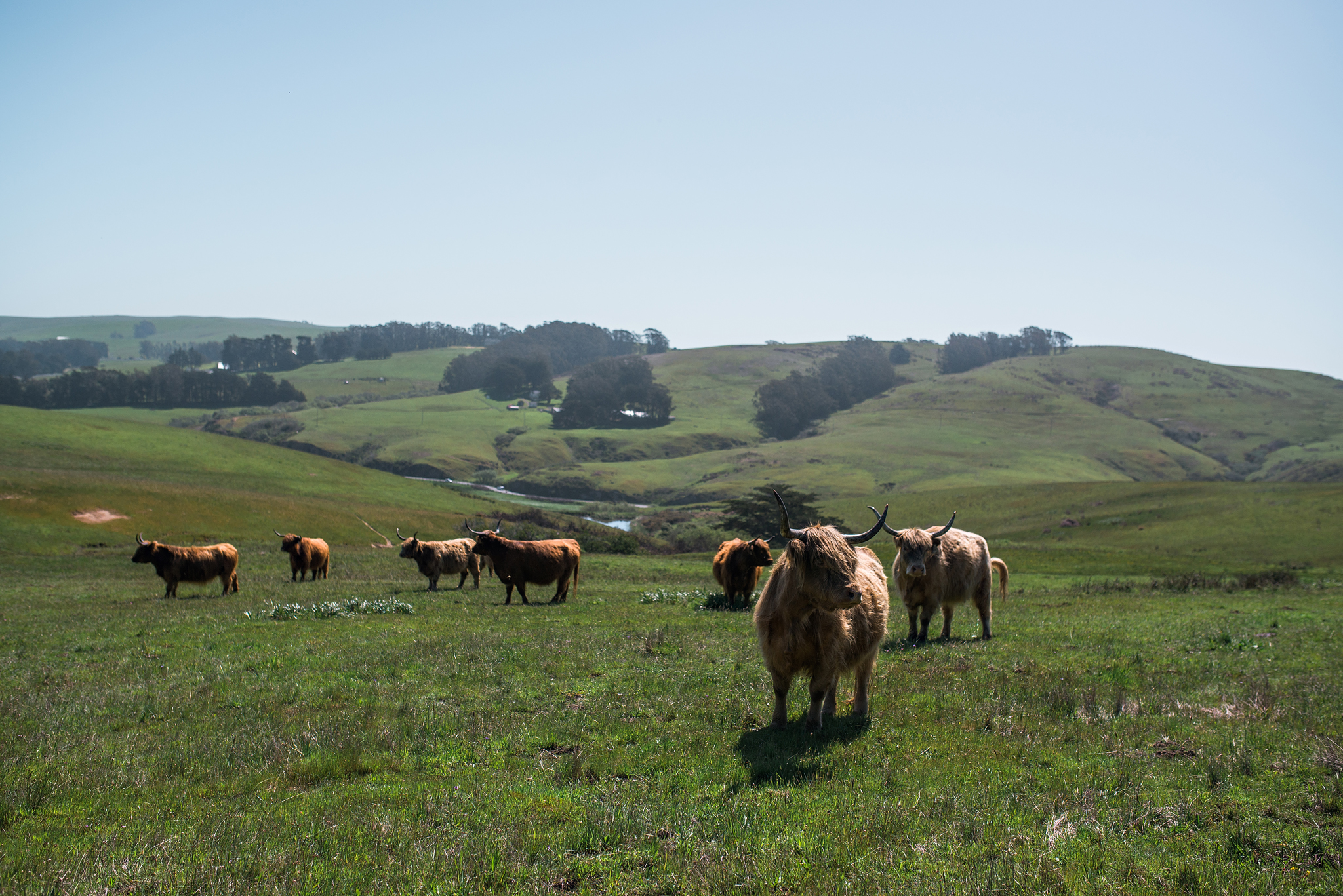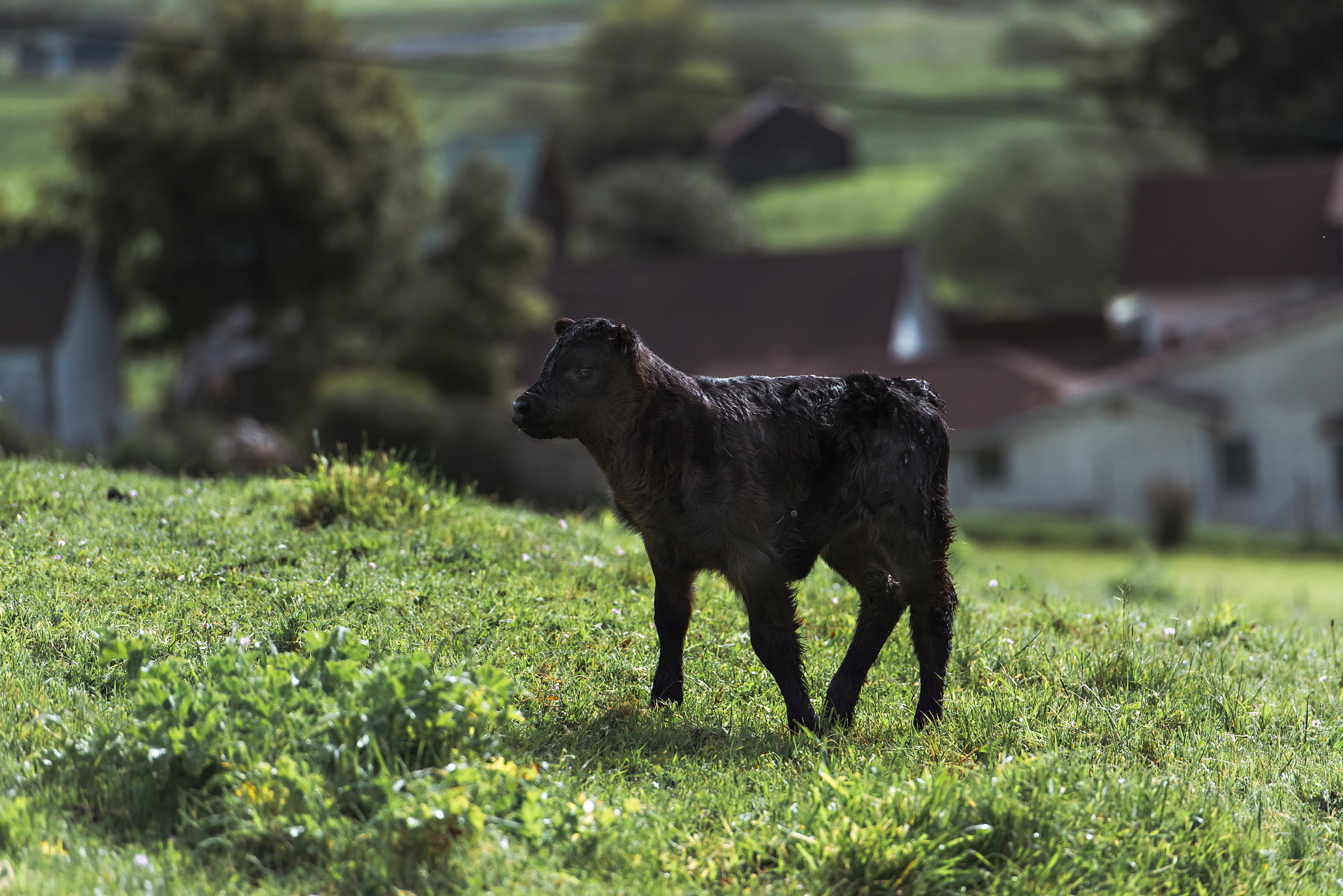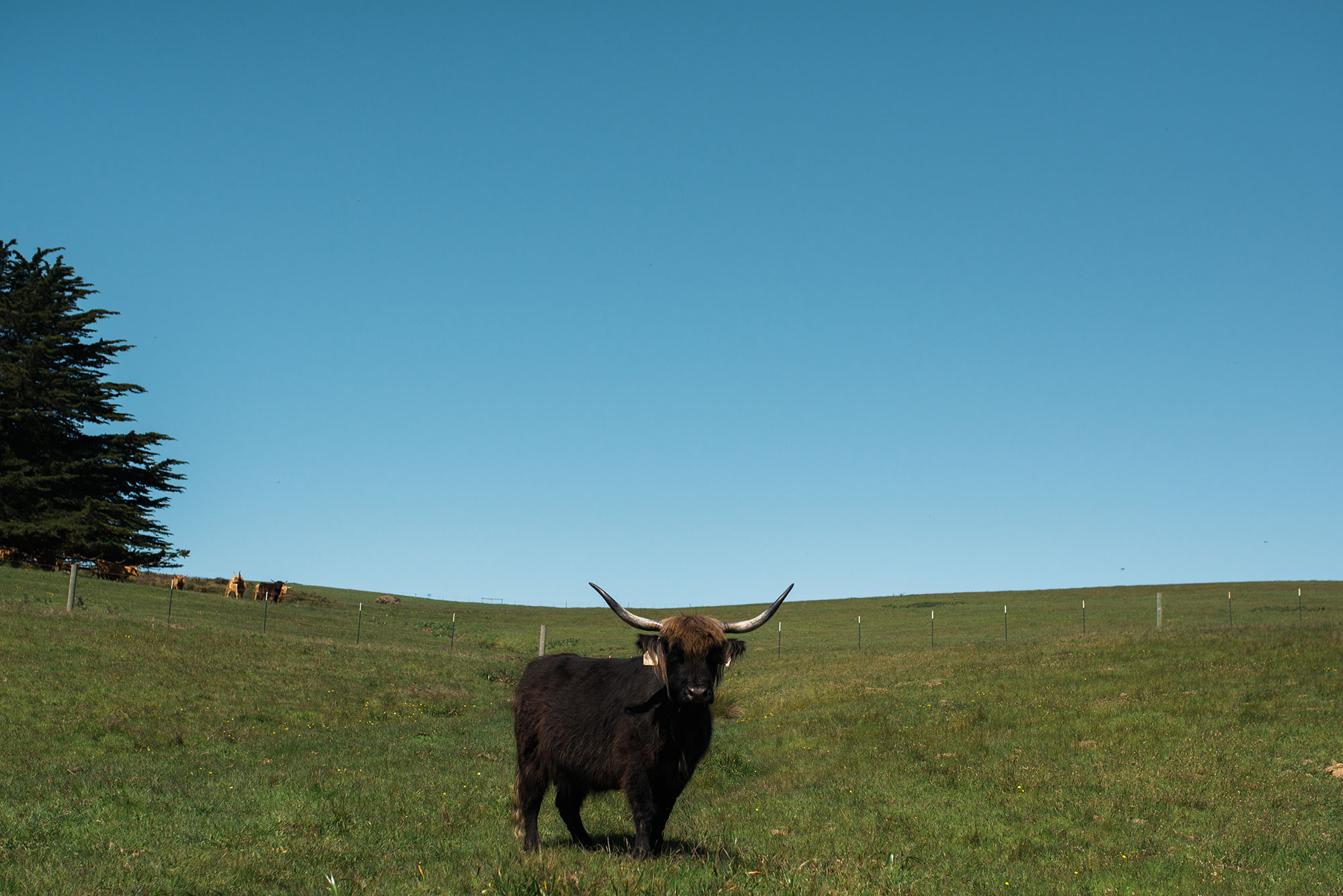Our Highland Cattle at Tomales Station
The Highland breed has lived for centuries in the rugged, remote highlands of Scotland, where extremely harsh conditions led to natural selection. Only the fittest, most adaptable animals survived. We’re proud owners of one of the largest herds of this fine animal in California. Several hundred strong, these pasture-raised cattle are at home on our more than 800-acre Tomales Station (owned and leased). Our Highlands are grass-fed and grass-finished and are raised employing a protocol that is entirely hormone- and antibiotic-free. We have acquired some of the oldest bloodlines in the country, which represent the very best attributes of this classic breed. We rotate our fold to fresh pasture seasonally, allowing them to gain weight healthily while maintaining the grassland ecosystem. These are all factors that contribute to beef that has outstanding flavor and palatability.

A CHAT WITH JOSEPH HARDIN, LONG MEADOW RANCH DIRECTOR OF AGRICULTURAL OPERATIONS
WHY DO WE BREED HIGHLAND CATTLE?
There are many advantages but, mainly, this breed was developed for performance on the traditional grasses from the northern British Isles as well as to produce tasty, highly palatable beef. As exclusively grass-fed and grass-finished cattle, we produce beef with lower levels of fat (i.e., higher protein per serving), higher beta carotene, omega-3, and higher iron content compared to cattle finished on grain. Importantly, beef from Highland cattle is genetically more tender than conventional beef. The muscle contains less connective tissue and the fibers are longer and larger, which are more readily separated during cooking, making the beef even more tender than other breeds raised on grass.Additionally Highlands have a longer productive life than most cattle breeds, typically 3-4 more years for a mother cow. Highland mothers have really strong maternal instincts, resulting in a very high percentage of healthy calves. Lastly, the cattle are aggressive browsers, meaning that they will happily graze just about any grass varietal, and even woody brush.
HOW LONG IS THE GESTATION PERIOD FOR A COW?
283 days
HOW MANY CALVES WILL A COW PRODUCE IN A LIFETIME?
Twelve. We have had a few cows that have produced as many as 16 calves.
HOW LONG WILL COWS FEED THEIR CALVES BEFORE THEY ARE WEANED?
Around 7-8 months. Our minimum standard is 200 days.

ARE THERE ANY METHODS LMR USES WHEN GROWING THE HERD THAT DIFFERS FROM TRADITIONAL CATTLE PRACTICE?
One point of distinction is that we operate a full circle cattle operation. We raise animals from birth through harvest. Typical cattle companies pursue only one part of the life cycle and operation. There are three phases in the production of beef cattle. “Cow-calf” is a ranch that has a mother cow herd and raises calves to sell. Next is a “stocker” operation where cattle are raised from 8 months to 18 months (or 550 lbs to 1000 lbs). The third and final phase is “finishing.” We schedule our harvests based on peak grass conditions from each site. Usually April – June in Tomales, and year-round in Ferndale.

HOW MANY PASTURES DOES LONG MEADOW RANCH HAVE FOR THEIR CATTLE OPERATION?
We have cattle at three separate properties, Tomales Station in west Marin County, Ferndale in Humboldt County, and a summer lease in Carneros in Napa County. Our property at Tomales Station is mainly for our “cow-calf” and “stocker” programs, with some finishing in early spring. Our main finishing property is in Ferndale.
HOW DOES LONG MEADOW RANCH UTILIZE THE BEEF?
We serve only our grass-fed beef at the restaurant at Farmstead, and we also sell directly to consumers at our Farmers’ Market at Farmstead, as well as the St. Helena Farmers’ Market and Napa Farmers’ Market. In keeping with our sustainable farming practices, we utilize the whole animal. The restaurant won’t always have steak on the menu, but we will have other creative menu items to help utilize the whole carcass, such as our grass-fed beef tartare and our grass-fed beef chili. Of course, it’s also featured in our grass-fed beef burger. Our grass-fed beef program is evolving as we grow. In fact, our herd has roughly doubled in the last two years. With that growth, we have also expanded into grass-fed beef jerky that we sell in our General Store at Farmstead and right here on this website.
